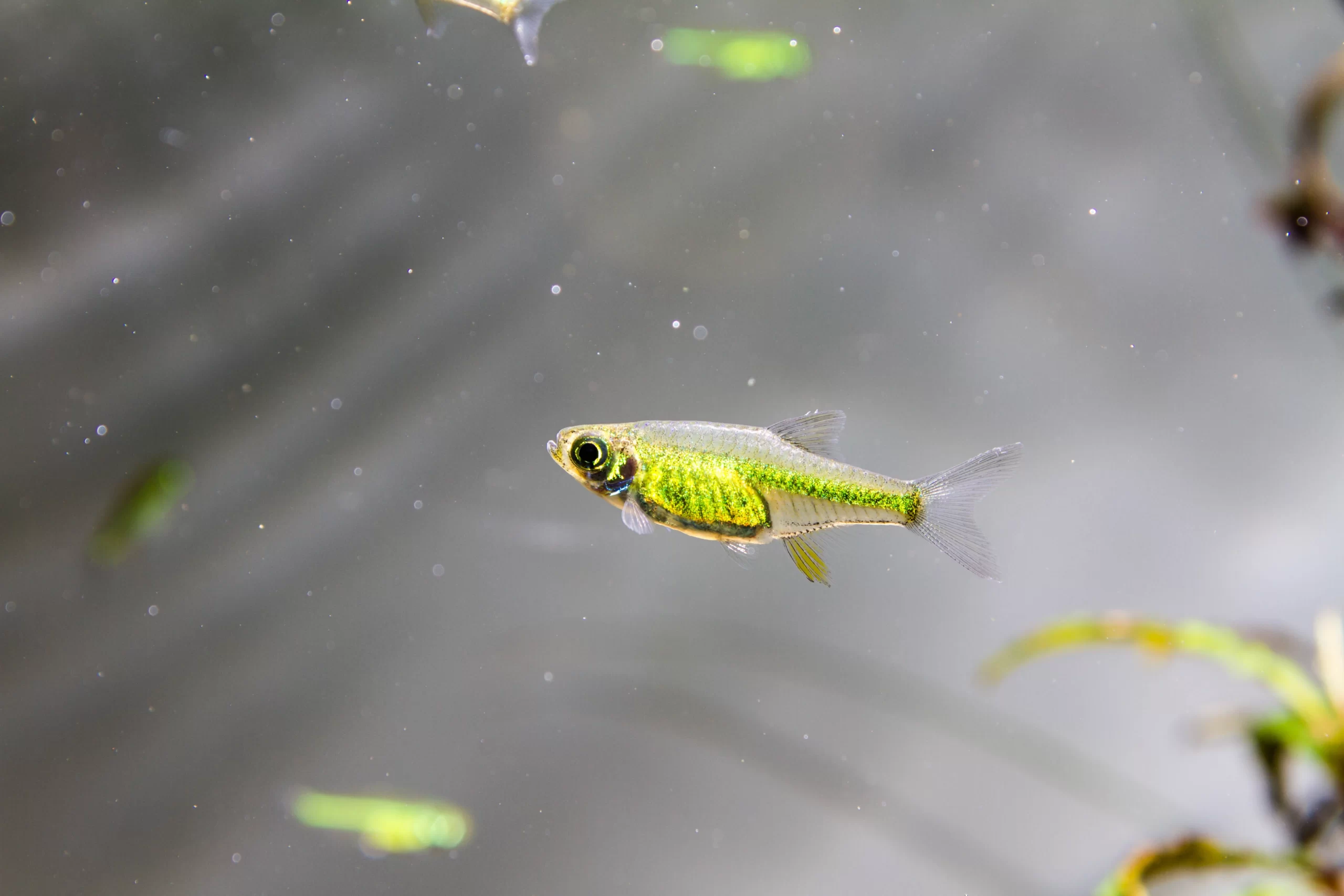

Emerald dwarf rasbora (Microdevario kubotai)
The emerald dwarf rasbora is one of the smallest danios you can buy. With its only small body size of about 2 cm it is the ideal fish for a nano aquarium.
Water parameters for emerald dwarf rasbora
- PH value: 6 – 7
- GH (total hardness): 1° – 20° dGH
- KH (carbonate hardness): 0° – 8° dKH
- Temperature: 22° – 26°C
Appearance
As the name suggests, emerald dwarf rasbora have a neon green emerald coloration. This is particularly present in a longitudinal stripe up to the caudal fin and on the ventral side. This coloration is also found around the gills. The rest of the body is green-yellow. Only the fins are usually completely transparent. When the light hits the body properly, it shimmers very nicely in the water. With proper keeping in the aquarium and sufficient high-quality food, this fish grows up to 2 cm.
Breeding
The breeding of emerald dwarf rasbora should be done in a separate breeding tank, although this is not absolutely necessary. It is also possible to place the eggs, which are attached to plants, in their own aquarium. This makes it easier to follow the progress of the fry. Targeted feeding is also easier. To increase spawning success, the water should be slightly acidic. After hatching from the eggs, the animals must be fed. This should be done best with particularly small food such as dust food.
Keeping emerald dwarf rasbora
Emerald dwarf rasbora are schooling fish. Therefore, at least a group of 6 – 8 animals should be present in the aquarium. Due to the size of these fish, keeping them in 30l is already possible. The bigger the tank is, the more animals you can put into the aquarium, of course. In addition to the group size, there are also other conditions. The aquarium should be densely planted. In addition, other hiding places by furnishings such as roots or stones should be present. Furthermore, a strong current through the filter should be prevented, since these fish prefer no to light current. These animals are all eaters. So feeding with flake food and granules is possible. However, live food is also gladly accepted.